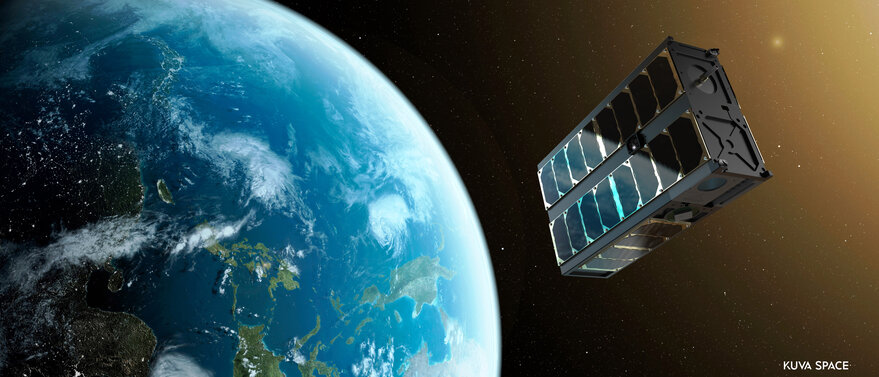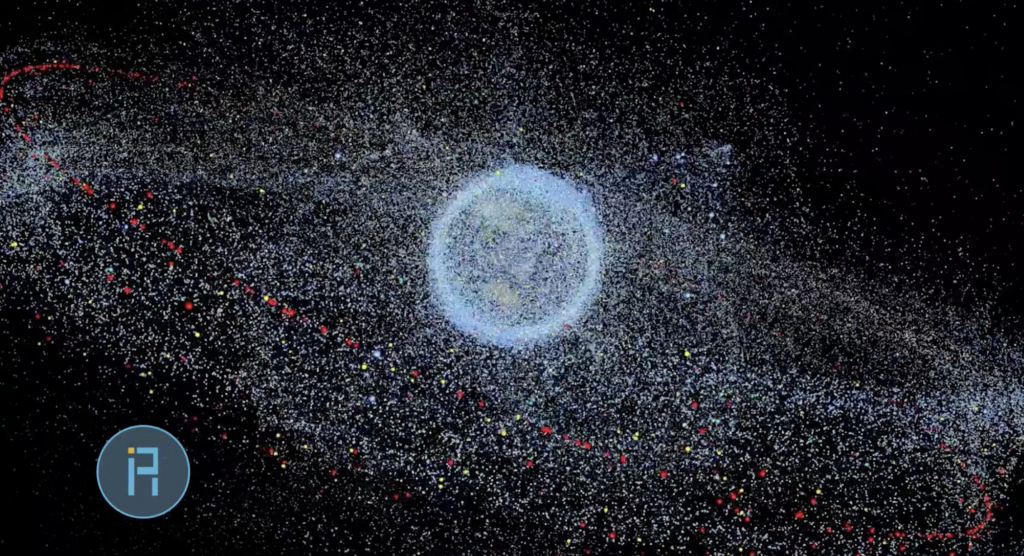Body’s defence in space
Thursday, 02 November 2023 07:00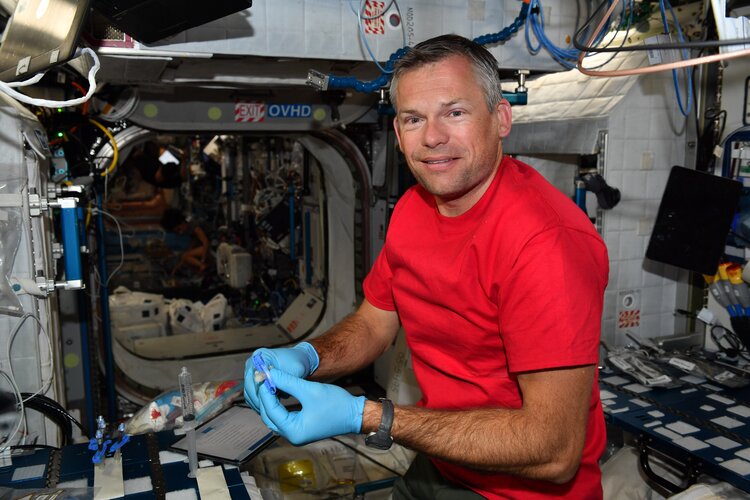
ESA astronaut Andreas Mogensen is taking part in an experiment to understand how the body’s immune system handles the new environment.
Retired Space Force Lt. Gen. Armagno joins Rocket Lab’s board of directors
Wednesday, 01 November 2023 20:55
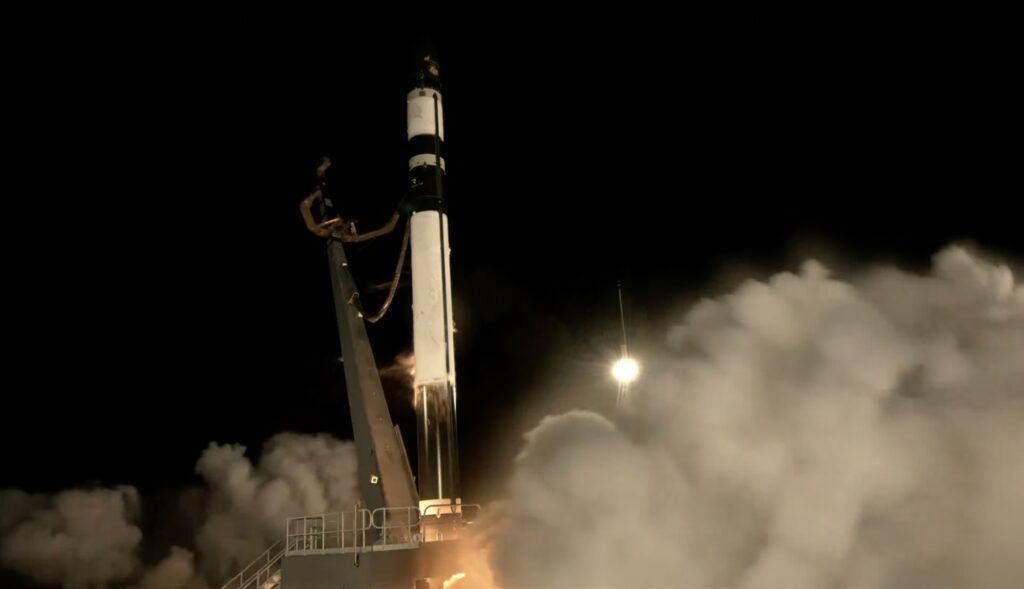
NASA's Lucy spacecraft swoops past first of 10 asteroids on long journey to Jupiter
Wednesday, 01 November 2023 19:58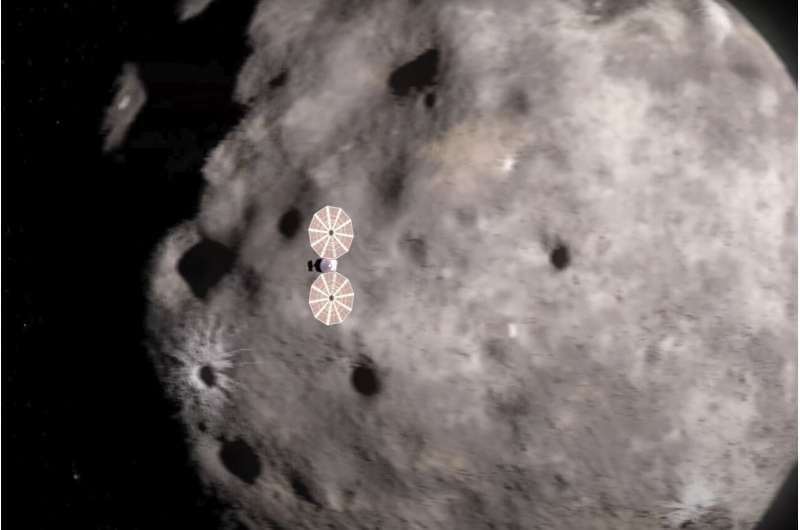
NASA's Lucy spacecraft on Wednesday encountered the first of 10 asteroids on its long journey to Jupiter.
The spacecraft on Wednesday swooped past the pint-sized Dinkinesh, about 300 million miles (480 million kilometers) away in the main asteroid belt beyond Mars. It was "a quick hello," according to NASA, with the spacecraft zooming by at 10,000 mph (16,000 kph).
Lucy came within 270 miles (435 kilometers) of Dinkinesh, testing its instruments in a dry run for the bigger and more alluring asteroids ahead.
Scientists develop a legged small celestial body landing mechanism for landing simulation and experimental test
Wednesday, 01 November 2023 19:54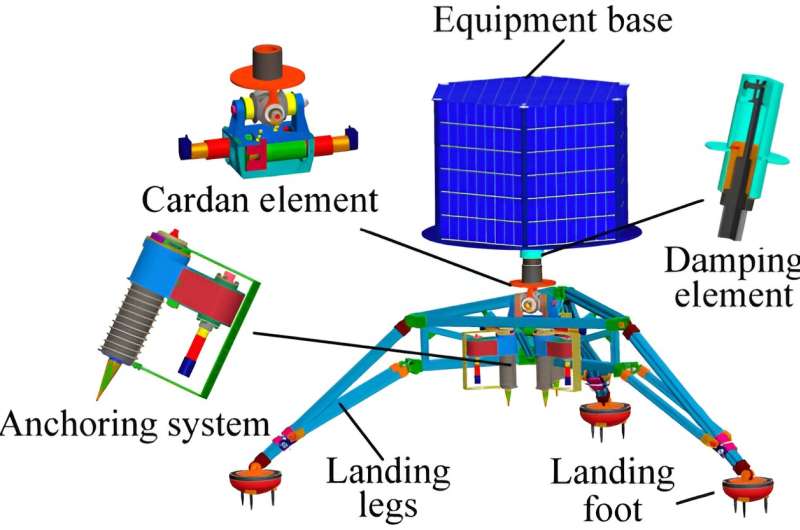
Landing stably is a precondition for exploring a small celestial body in situ. The surface of a small celestial body frequently has weak gravity and is irregular, and the surface environment is unknown and uncertain. The landing mechanism tends to rebound and turn over, and the landing stability time is long. However, while most landing performance research has focused on lunar landing, there are differences between the surfaces of the moon and Mars.
Therefore, it important to study landing performance in different conditions in order to analyze the landing stability boundary, and to propose reasonable landing suggestions to support China's small celestial body exploration.
In a research article recently published in Space: Science & Technology, researchers from Beijing Institute of Spacecraft System Engineering, Harbin Institute of Technology, and Polytechnic University of Milan have established a simulation model of a landing mechanism under different landing conditions, analyzed the sensitivity of the key parameters affecting the landing performance, and verified correctness of the simulation via experimental tests, which can provide guidance for a landing mechanism to land stably on a small celestial body.
OSIRIS-REx flies on as OSIRIS-APEX to explore its second asteroid
Wednesday, 01 November 2023 18:00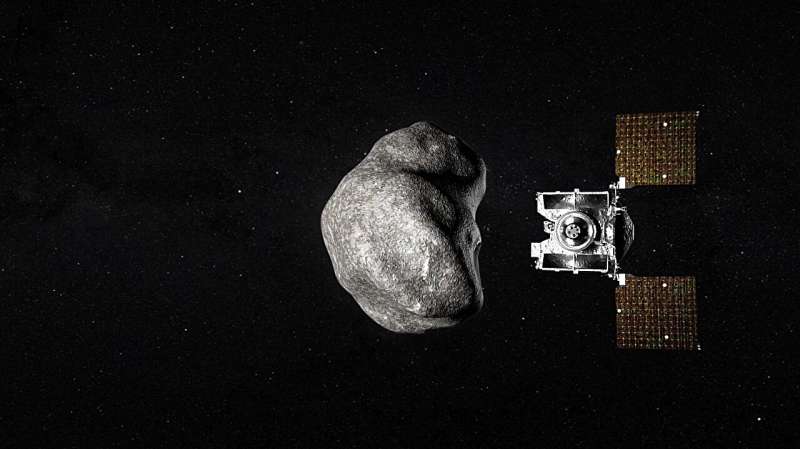
After seven years in space and over 4 billion miles traveled, NASA's OSIRIS-REx mission successfully collected and delivered the first U.S. sample from a near-Earth asteroid. Yet, after all this time and travel, the spacecraft will not retire.
Instead, NASA extended the University of Arizona-led mission so that the spacecraft can be used to study another near-Earth asteroid named Apophis. The mission was renamed OSIRIS-APEX, short for OSIRIS-APophis EXplorer. An overview of the mission was published in The Planetary Science Journal.
OSIRIS-REx deputy principal investigator Dani DellaGiustina is now the principal investigator for the OSIRIS-APEX mission.
Twenty minutes after dropping the sample high above Earth's atmosphere on Sept. 24, the spacecraft fired its thrusters to put it on course to rendezvous with Apophis in 5½ years—just after Apophis makes its own close approach to Earth.
Delta swapping out Intelsat Wi-Fi for Hughes on 400 planes
Wednesday, 01 November 2023 17:19

Space Force to split 21 launches between SpaceX, United Launch Alliance
Wednesday, 01 November 2023 14:20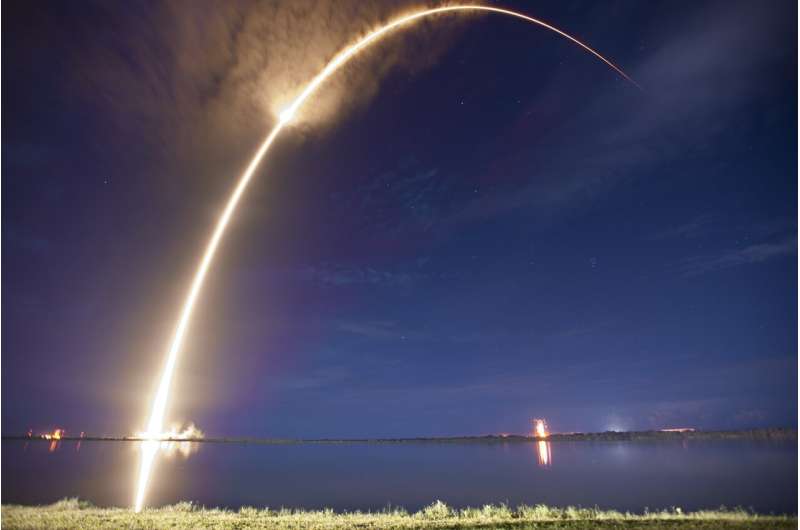
The Space Force is giving a nearly even share of 21 upcoming national security launches between SpaceX and United Launch Alliance.
Space Systems Command, which manages a $15 billion budget for the Department of Defense to ensure U.S. strategic advantage in space, announced ULA will provide 11 missions on its new Vulcan Centaur rocket while SpaceX will be responsible for 10 missions on its Falcon 9 or Falcon Heavy rockets as part of the National Security Space Launch (NSSL) Phase 2 Launch Service Procurement contract for fiscal year 2024, which began on Oct. 1.
This is the fifth and final year of the NSSL Phase 2 contract, and will be for missions flown over the next two to three years. The majority of launches will come from ULA and SpaceX's launch facilities at Cape Canaveral Space Force Station, although Falcon Heavy launches if required are limited to Kennedy Space Center, and both ULA and SpaceX can launch from Vandenburg Space Force Base in California.
"Over the five-year Phase 2 contract, we will have ordered a total of 48 missions, a significant increase over the 34 missions originally estimated leading up to Phase 2," said Brig.
Op-ed | Space Force launch strategy a step in the right direction
Wednesday, 01 November 2023 12:10
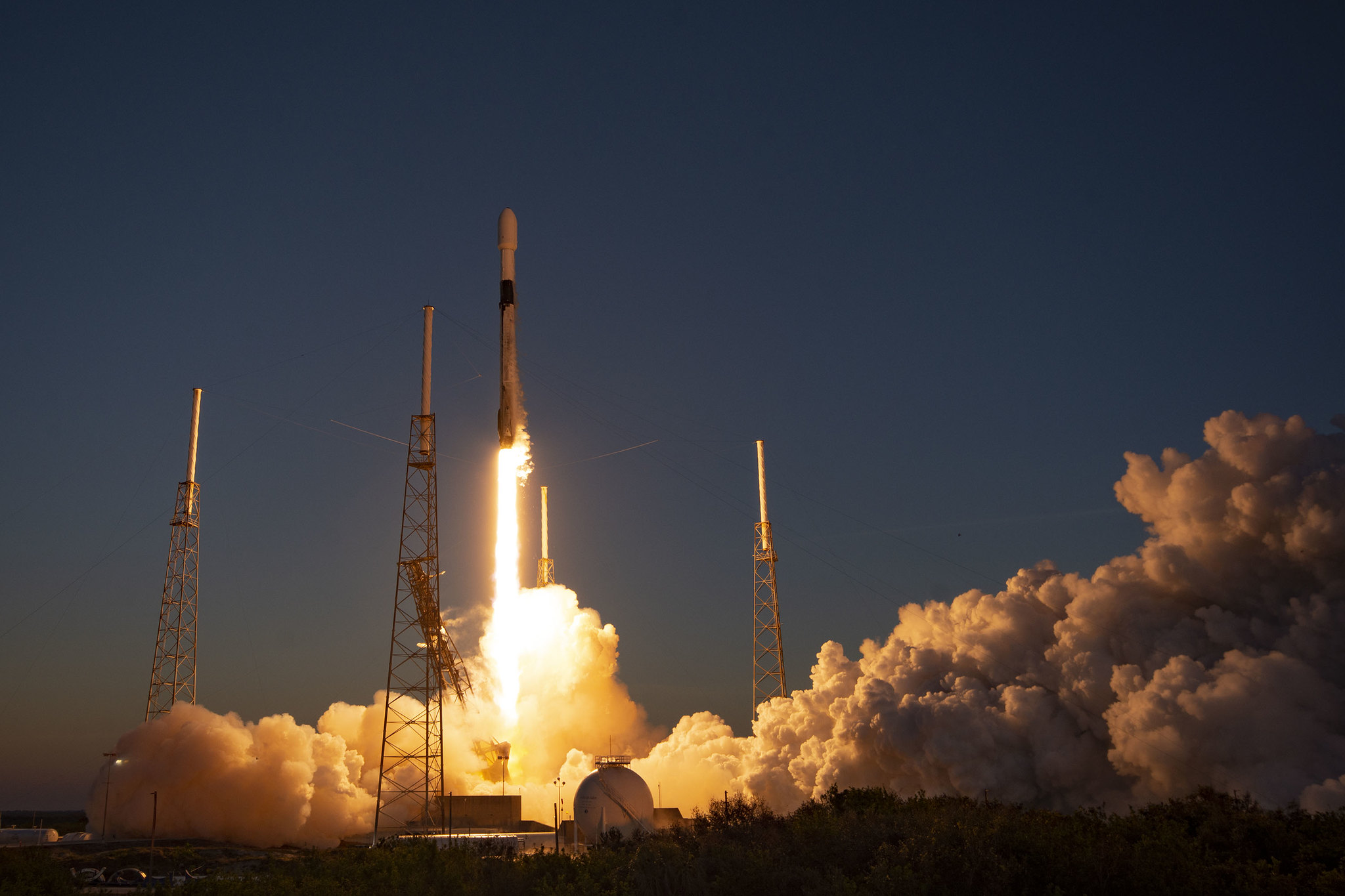
IceCube Observatory creates first map of Milky Way without using electromagnetic waves
Wednesday, 01 November 2023 11:01 We've learned a lot about the Universe from telescopes that are sensitive to anything from high-energy gamma waves to visible light to low-energy radio waves. But detecting such electromagnetic waves has limitations. Using PSC's Bridges-2 system to simulate signals in their Antarctic IceCube detector, an international collaboration of scientists has now made the first map of the Milky Way galaxy
We've learned a lot about the Universe from telescopes that are sensitive to anything from high-energy gamma waves to visible light to low-energy radio waves. But detecting such electromagnetic waves has limitations. Using PSC's Bridges-2 system to simulate signals in their Antarctic IceCube detector, an international collaboration of scientists has now made the first map of the Milky Way galaxy NASA, Pacific Disaster Center increase landslide hazard awareness
Wednesday, 01 November 2023 11:01 After years of development and testing, NASA's Landslide Hazard Assessment for Situational Awareness model (LHASA) has been integrated into the Pacific Disaster Center's (PDC) multi-hazard monitoring, alerting, and decision-support platform, DisasterAWARE. LHASA allows researchers to map rainfall-triggered landslide hazards, giving DisasterAWARE users around the world a robust tool for identifyi
After years of development and testing, NASA's Landslide Hazard Assessment for Situational Awareness model (LHASA) has been integrated into the Pacific Disaster Center's (PDC) multi-hazard monitoring, alerting, and decision-support platform, DisasterAWARE. LHASA allows researchers to map rainfall-triggered landslide hazards, giving DisasterAWARE users around the world a robust tool for identifyi NASA's InSPA Aims to Stimulate Commercial Manufacturing in Low Earth Orbit
Wednesday, 01 November 2023 11:01 NASA has outlined a comprehensive strategy for its In Space Production Applications (InSPA), aimed at stimulating commercial manufacturing initiatives in low Earth orbit (LEO). This program employs a multi-phase award process designed to elevate the technological readiness of selected projects and boost their market viability.
NASA's annual calls for white papers under its Research Opportu
NASA has outlined a comprehensive strategy for its In Space Production Applications (InSPA), aimed at stimulating commercial manufacturing initiatives in low Earth orbit (LEO). This program employs a multi-phase award process designed to elevate the technological readiness of selected projects and boost their market viability.
NASA's annual calls for white papers under its Research Opportu Data from NASA's WISE used to preview Lucy mission to Asteroid Dinkinesh
Wednesday, 01 November 2023 11:01 Researchers have utilized infrared survey data to refine the asteroid's size and surface brightness in support of the Nov. 1 encounter by NASA's Lucy mission. NASA's Lucy mission will soon have its first asteroid encounter as the spacecraft travels through deep space en route to Jupiter's orbit. But before the spacecraft passes 265 miles (425 kilometers) from the surface of the small asteroid Di
Researchers have utilized infrared survey data to refine the asteroid's size and surface brightness in support of the Nov. 1 encounter by NASA's Lucy mission. NASA's Lucy mission will soon have its first asteroid encounter as the spacecraft travels through deep space en route to Jupiter's orbit. But before the spacecraft passes 265 miles (425 kilometers) from the surface of the small asteroid Di 


